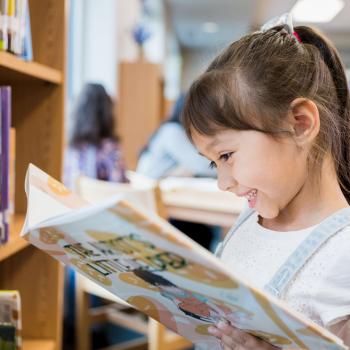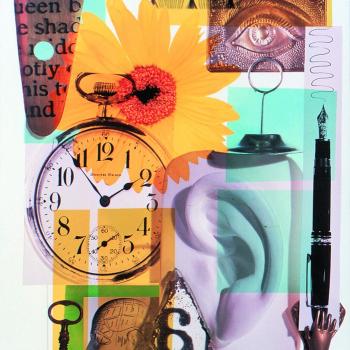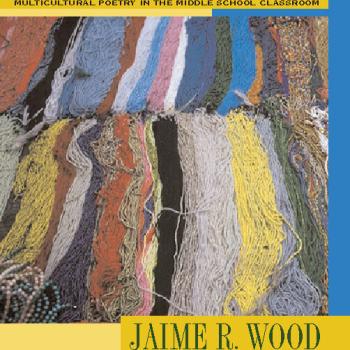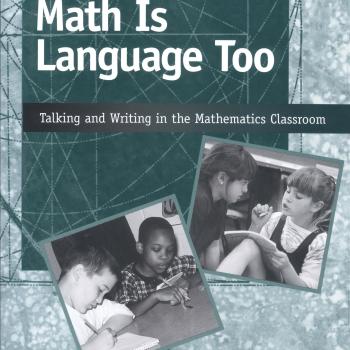Y'all set down a spell and learn ‘bout dialects!" In other words, your students will use The Color Purple to explore dialect and how it reveals information about the characters.

What Did They Say? Dialect in The Color Purple

Grades
|
Teaching Point of View With Two Bad Ants
3 - 5
Lesson Plan
| Standard Lesson
Students will be crawling all over this assignment when they use illustrations and text to learn about life from a bug's point of view.

Grades
|
Identifying and Classifying Verbs in Context
3 - 5
Lesson Plan
| Minilesson
The interactive read-aloud in this lesson helps students to identify and classify the three verb typesaction, state-of-being or linking, and helping verbs.

Grades
|
Peer Edit With Perfection: Effective Strategies
3 - 5
Lesson Plan
| Standard Lesson
Students take a fresh look at the revision process and help one another polish their written work through a peer-editing strategy that is simple, systematic, and constructive.

Grades
|
Identifying and Understanding the Fallacies Used in Advertising
9 - 12
Lesson Plan
| Standard Lesson
Students examine the fallacies that surround them every day, deconstruct fallacious images and messages in advertisements, and demonstrate their understanding of the fallacies through multimedia presentations.

Grades
|
Diagram It! Identifying, Comparing, and Writing About Nonfiction Texts
K - 2
Lesson Plan
| Unit
Students compare the traits fact and fiction by using a Venn diagram to compare fiction and nonfiction books about Native Americans.

Grades
|
Using Historical Fiction to Learn About the Civil War
3 - 5
Lesson Plan
| Standard Lesson
Students in grades 4 and 5 discuss inferential comprehension and visualization as they use a think-aloud questioning strategy to develop a deeper understanding of a historical novel.

Grades
|
Fact or Fiction: Learning About Worms Using Diary of a Worm
K - 2
Lesson Plan
| Standard Lesson
Students often believe that fiction writers make everything up, seldom realizing how research worms its way into entertaining writing. In this lesson, students read Diary of a Worm to find out how fact merges with fiction.

Grades
|
Roots and Branches: A Resource of Native American Literature
7 - 12
Professional Library
| Book
This valuable resource book offers teachers an opportunity to learn and to teach about Native American literatures in context. Susag examines the historical and literary contexts that frame the literary work of Native peoples.

Grades
|
Planning for Inquiry: It's Not an Oxymoron!
K - 6
Professional Library
| Book
Planning for Inquiry shows you how to get an inquiry-based curriculum started, how to keep it going, and how to do so while remaining accountable to mandated curricula, standards, and programs.

Grades
|
Literary Terms: A Practical Glossary
9 - 12
Professional Library
| Book
Literary Terms: A Practical Glossary provides up-to-date definitions, drawing on recent developments in literary theory and emphasizing the role of reading practices in the reproduction of literary meanings. Unlike other glossaries, it includes brief activities to help students develop a working knowledge of the concepts.

Grades
|
Risking Intensity: Reading and Writing Poetry with High School Students
9 - 12
Professional Library
| Book
Judith Michaels approaches the subject of the self at both the personal and practical levels, opening the world of poetry to her classes through carefully planned strategies.

Grades
|
Nikki Giovanni in the Classroom: "The same ol' danger but a brand new pleasure"
9 - 12
Professional Library
| Book
The first volume in the NCTE High School Literature Series, this small, practical book features primary source materials including many of Giovanni's poems reprinted in full, easily adaptable lessons and activities, and a resource section for students and teachers wishing to study Giovanni further.

Grades
|
Great Films and How to Teach Them
9 - 12
Professional Library
| Book
Costanzo offers high school and college teachers an updated, expanded edition that contains 80% new material on teaching film, including study guides of 14 new film with relevant ways to engage their students through a medium that students know and love.

Grades
|
Code of Best Practices in Fair Use for Media Literacy Education
K - 12
Professional Library
| Position Statement
This document is a code of best practices that helps educators using media literacy concepts and techniques to interpret the copyright doctrine of fair use.

Grades
|
Being and Becoming: Multilingual Writers' Practices
K - 8
Professional Library
| Journal
This study examines the writing practices taken on and negotiated by multilingual class members within two multiage elementary classrooms.

Grades
|
Stop Pretending and Think about Plot
5 - 9
Professional Library
| Journal
Jago offers a review of Freytag's Pyramid and an example of how work with the concept of plot structure positively affected student understanding and writing.

Grades
|
From Sheryl Crow to Homer Simpson: Literature and Composition through Pop Culture
7 - 12
Professional Library
| Journal
High school teacher Jerome Evans makes popular culture an integral part of his courses. Through analyzing themes in song lyrics, rhetorical devices in essays and advertisements, and psychology in contemporary film, students improve their skills in critical thinking and writing.

Grades
|
Living Voices: Multicultural Poetry in the Middle School Classroom
6 - 8
Professional Library
| Book
Jaime Wood offers middle school English language arts teachers material for teaching poetry by Nikki Giovanni, Li-Young Lee, and Pat Mora; the text includes graphic organizers and other resources.

Grades
|
Math Is Language Too: Talking and Writing in the Mathematics Classroom
3 - 6
Professional Library
| Book
Replete with children's stories and illustrations, Math Is Language Too looks at children as sense-makers, storytellers, language creators, and problem-posers.